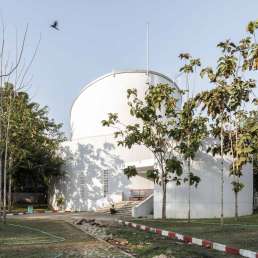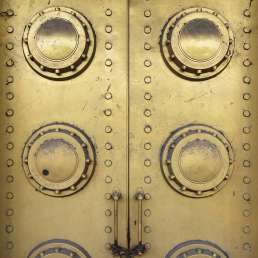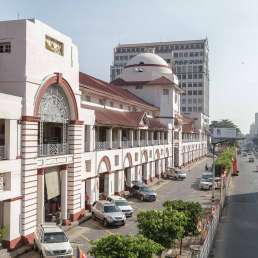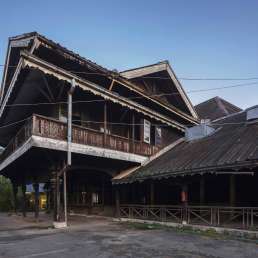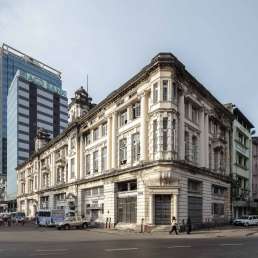Address: Shwedagon Pagoda Road
Year built: 1975
Architect: Unknown
Here lies one of Myanmar’s most cherished sons. U Thant was the United Nations Secretary-General for two terms, from 1961 to 1971. He was at the helm of the organisation at the height of the Cold War, including the Cuban Missile Crisis, one of history’s most dangerous geopolitical standoffs. Somewhat secluded, this building stands to the far right of a row of tombs near the southern entrance of the Shwedagon Pagoda. The front walls of the mausoleum are perforated, letting in light and air. A park with a manicured lawn and short hedges surrounds the building.
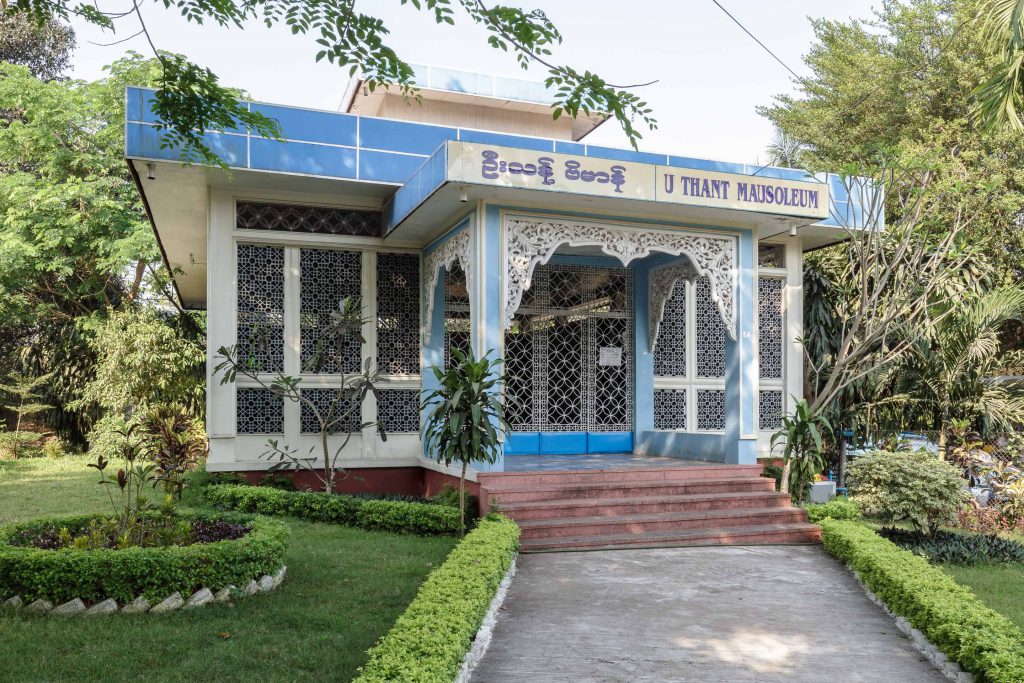
U Thant was a member of the post-independence and democratic government led by Prime Minister U Nu. After the 1962 coup, relations between U Thant and General Ne Win’s military dictatorship were tense. Ne Win was reportedly convinced that U Thant was using the United Nations as a stage to connive against him and support the deposed U Nu. After U Thant’s death in New York in 1974, his body was sent to Rangoon for the funeral. Ne Win decreed that no official protocol should meet the coffin’s arrival, prompting widespread anger. Students seized the coffin from Kyaikkasan Race Course, where it lay, and brought it to the campus of Yangon University, where the body was guarded by protesters for seven days. The government finally proposed to place the body at its current site, but the students refused and buried it at the Student Union compound. Two days later, at night, troops came to dig up the coffin and placed it here, where the mausoleum now stands.
Tragically, scores died when the military raided the university shortly afterwards, on 11 December 1974. This was an overt attempt to punish the students and deter them from launching further protests. The mausoleum was quickly erected by government engineers—too quickly, perhaps. “U Thant deserves better than that,” says Yangon-based architect U Sun Oo.
U Thant’s grandson, Thant Myint-U, is a writer and diplomat. Raised in the United States, his first visit to Rangoon was to accompany U Thant’s remains. Now a former UN official himself, he moved to Myanmar several years ago and became an adviser to President Thein Sein’s government on the peace process with the country’s ethnic armed groups. He also chairs the Yangon Heritage Trust and plays a crucial role in efforts to preserve the city’s iconic heritage buildings. He has written several popular books on Myanmar’s history and frequently comments on Myanmar affairs in the Western media. His books feature affectionate portraits of his grandfather and their life in New York. Of his passing, he writes that U Thant was “unwell from exhaustion and the stress of work” by the end of his tenure at the helm of the United Nations. In his writings, Thant Myint-U also recalls his grandfather’s life on the other side of the planet, in New York, in a “red-brick house, partly covered in ivy and set on a grassy six-acre hillside along the Hudson River. On the map it was part of Riverdale, but in most other ways it was a small slice of Burma.”
